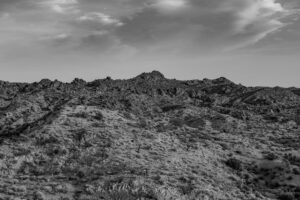
Recently, I attended a photograph and art lecture where the topic of photography and realism came up. The presentation focused on two parts. The first is how photography has changed during the transition from film to digital. With that transition, a whole new world of artistic possibilities opened up, from the capabilities of modern cameras to the computer-based editing that made so much more out of images. The second was to relate how many of the old techniques, like dodging and burning, are relevant in today’s world.
The lecturer arranged people into two camps, documentarians and artists. In that line of thinking, people who do not heavily edit their photographs are documenting a scene, while people who do not hold themselves beholden to a literal scene are artists who can do anything with an image.
There was some irony here, because the presenter used Ansel Adams’ Moonrise, Hernandez as an example. Indeed, he showed a great image of Ansel in front of his before/after prints to show the power of processing. On the other hand, in showing that you can move the moon, or make it 3 times the size, he lost another point.
Ansel Adams made that image in late 1941, while on the Mural Project for the National Park Service (NPS), barely 5 weeks before Pearl Harbor resulted in the cancellation of the project. While Ansel kept very good records of his work for NPS, he did not keep a record of when he exposed the image. When Moonrise, Hernandez became a very popular print, the Park Service wondered if that image may have been made on a day Ansel was working for them. As it turns out, the literal position of the Moon is what allowed the exact day be identified and confirm that Ansel Adams was the true owner of the work.
Sometimes, realism isn’t so bad!
Another point that I felt was lost is that there is a third way to view photography as art. There is a path between literal realism and art with little resemblance of its natural environment. To me, there is nothing with editing that removes distracting edges, cleans unsightly areas of an image, emphasizes and de-emphasizes areas of a photograph, or other subtlties of the art. That is still photography, and still art.
Now, all you need to do is look at some social media profiles or the front page of 500px to see that there are people who seem to have an exacting radar for perfect clouds wherever they go. There isn’t anything inherently wrong with heavy compositions, stacking of images, and other aggressive techniques. But when you alter the original character of a raw file, you are now doing digital art? Is digital art less valuable than a true photograph? Absolutely not! The first rule of art is that there are no rules.

If people would understand that photography and digital art can stand side-by-side, and that neither is necessarily better than the other, than people will be more likely to be forthcoming about how their images are made.
I was told about a famous photographer who entered an image into a contest with a beautiful double-rainbow. The contest people contacted this person and told that person they needed to remove the image since the spectrum on both rainbows was in the same order. Indeed, in a double rainbow, the rainbow’s spectrums are reversed! A little knowledge, and a little honesty would go a long way on bridging that divide between so-called documentarians and so-called artists.
T.M. Schultze is a San Diego-based photographer, traveller, and writer. He writes, photographs, and draws things of the outdoors that have inspired humans for thousands of years. He co-authored the Photographer’s Guide to Joshua Tree Park which can be purchased here.
